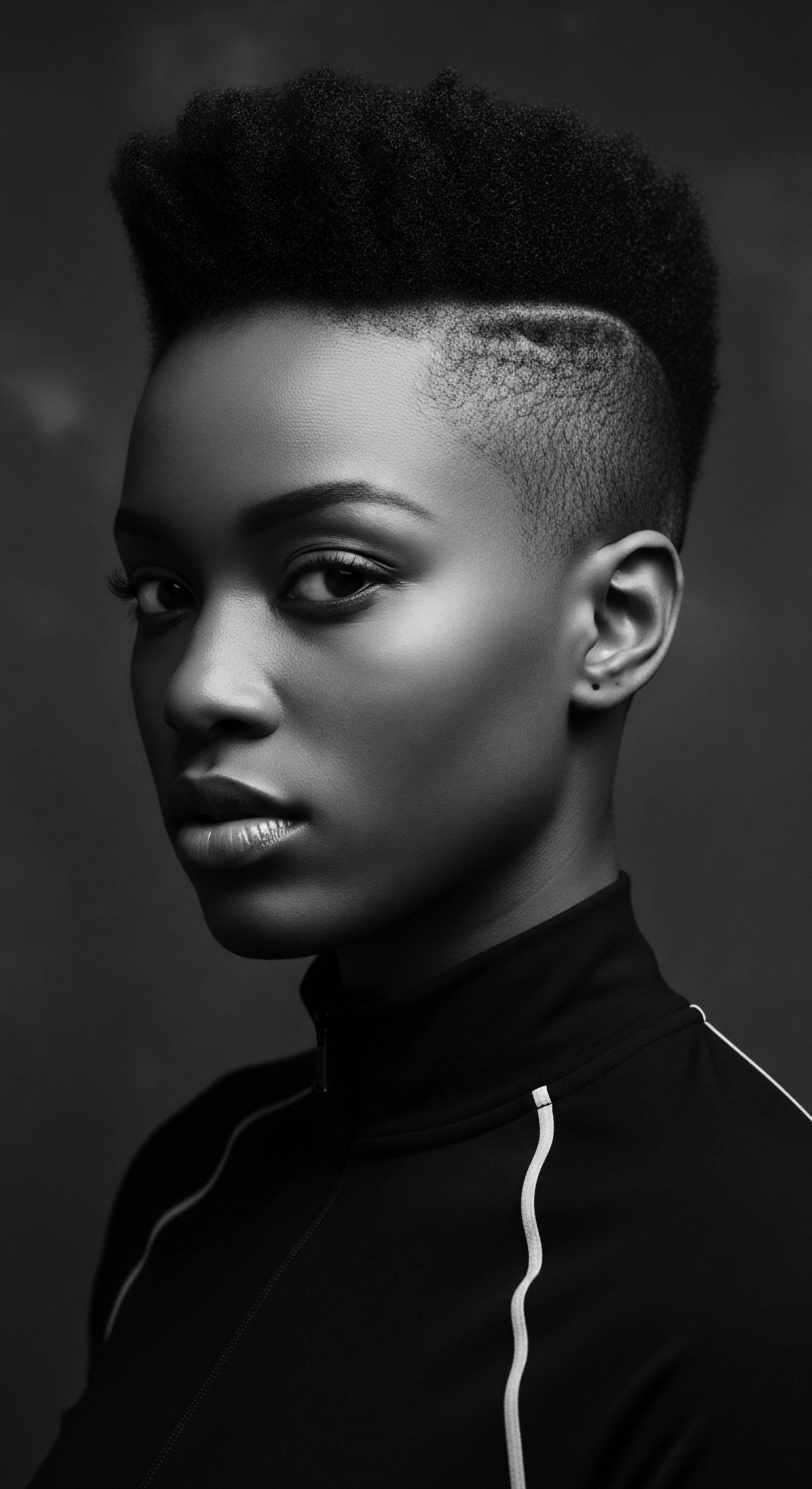
Roots
There is a silence, not of absence, but of waiting, that hums beneath the surface of every strand of textured hair. It is a waiting for stories to be told, for wisdom to be recalled, for the very essence of ancestry to rise and be seen. For those whose lineage traces through the winds of the African diaspora, hair is a living record. It carries the weight of history, the joy of survival, and the persistent pulse of selfhood.
In our contemporary age, digital platforms have become unexpected keepers of this memory, places where echoes from the past resonate with a startling clarity, shaping how we connect with our heritage in ways once unimaginable. They invite us to listen to the whispers of ancient practices, to see the scientific marvel in each curl, and to remember the deep cultural significance that has always been intertwined with our hair.
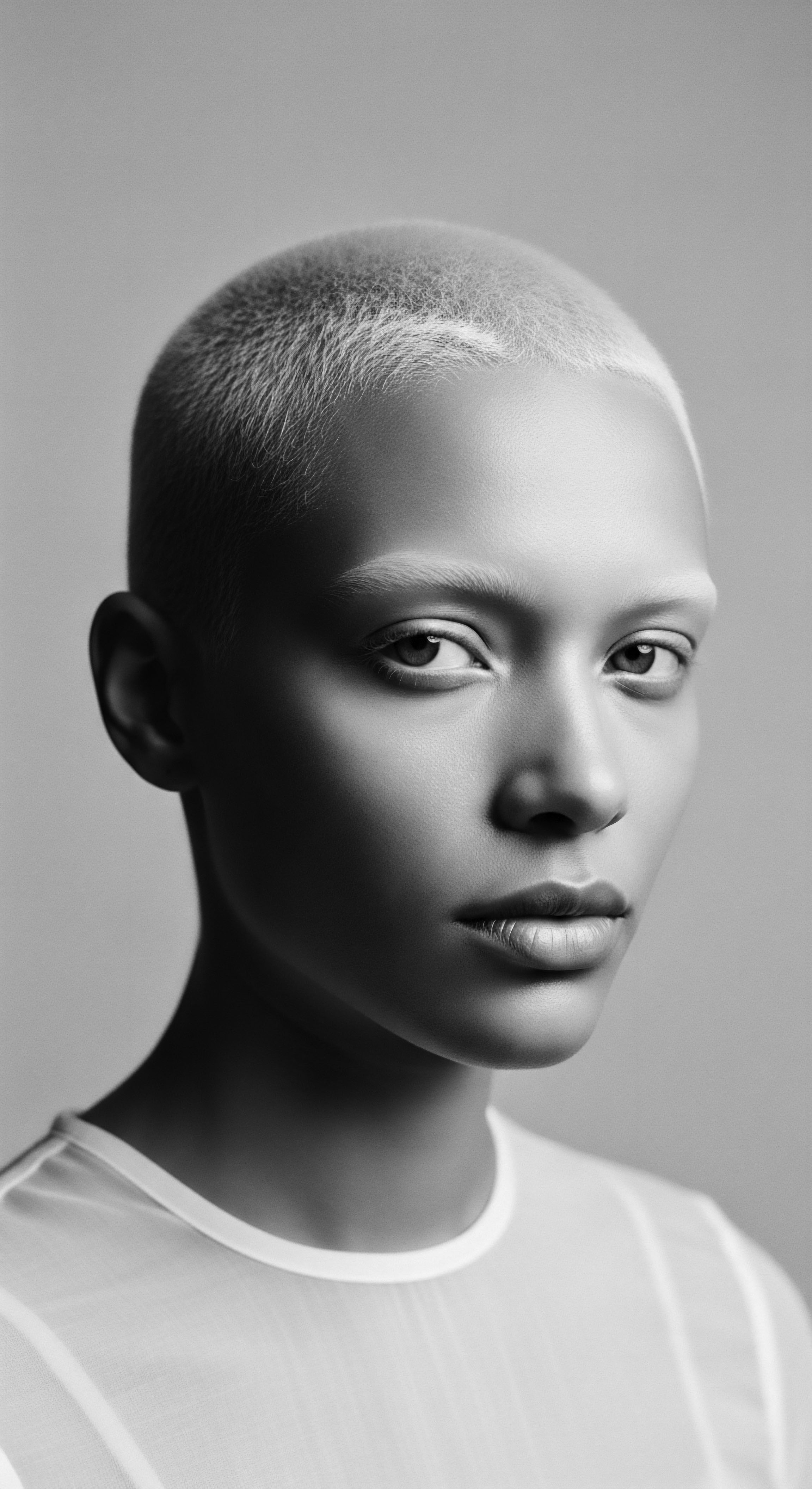
Hair’s Ancestral Blueprint
Understanding textured hair commences with its fundamental biology, a blueprint etched across generations. African hair, often described as Kinky, Coily, or Spiraled, possesses a unique elliptical cross-section and grows in tight, intricate patterns. This structural distinction lends it a remarkable strength, yet also a propensity for dryness and tangling, necessitating specific care methods developed over millennia. Ancient communities, without the benefit of microscopes, instinctively understood these attributes.
Their practices, passed through oral traditions and communal ritual, reflected an intuitive grasp of hair’s needs, often focusing on moisture retention and gentle handling. The very act of hair grooming became a societal anchor, a space for shared stories and the passing of ancestral knowledge.
Modern science now validates much of this inherited wisdom. The tightly curled nature of textured hair means its natural oils, produced by the scalp, struggle to travel down the hair shaft as easily as on straighter strands. This structural characteristic, an evolutionary response perhaps to harsh sun and dry climates, means moisture easily escapes.
Digital spaces now serve as vast repositories, illuminating these scientific understandings in plain language. They offer a bridge between ancestral observations and contemporary biological insights, reinforcing the logic behind traditional oiling and protective styling.

Classifying Hair Beyond Simple Sight
How we categorize hair is seldom neutral. While modern systems like the Andre Walker hair typing system attempt to classify hair textures numerically (e.g. Type 4C for very tight coils), such approaches sometimes carry unintended echoes of historical biases that ranked hair types hierarchically.
In earlier times, particularly within African societies, hair classification was never about a mere aesthetic grading; rather, it was a profound system of communication. Hair styles, patterns, and even the natural growth of hair indicated social standing, age, marital status, tribal identity, and spiritual connection.
Hair, for many African societies, served as a living visual language, speaking volumes about an individual’s place in the community.
Digital platforms, in their sprawling expansiveness, have become sites of both continuation and contestation regarding hair classification. On one hand, they circulate and popularize typing systems, yet on the other, they also host vigorous discussions that challenge the underlying biases of these systems. Online communities reclaim and center traditional terms, fostering a more culturally sensitive lexicon. The very act of sharing images and personal hair journeys online empowers individuals to define their own hair narratives, sometimes rejecting established numerical labels in favor of descriptions that resonate more deeply with their inherited understanding of self.
| Historical Significance Tribal Identity ❉ Distinct braiding patterns indicated specific ethnic groups. |
| Contemporary Expression in Digital Spaces Digital showcases of heritage styles, learning from elders online. |
| Historical Significance Social Status ❉ Elaborate styles communicated wealth or rank. |
| Contemporary Expression in Digital Spaces Online platforms celebrate unique, intricate designs as statements of personal identity. |
| Historical Significance Marital Status ❉ Hair configurations could signal availability or partnership. |
| Contemporary Expression in Digital Spaces Less direct signaling, but digital platforms allow for personal expressions of relationship status through style choices. |
| Historical Significance Spiritual Connection ❉ Hair as a conduit to spiritual realms. |
| Contemporary Expression in Digital Spaces Online groups discuss hair as part of holistic wellness and spiritual self-care. |
| Historical Significance The digital realm mirrors, in new forms, the ancient practice of hair as a profound communication medium, connecting past expressions with present-day identities. |
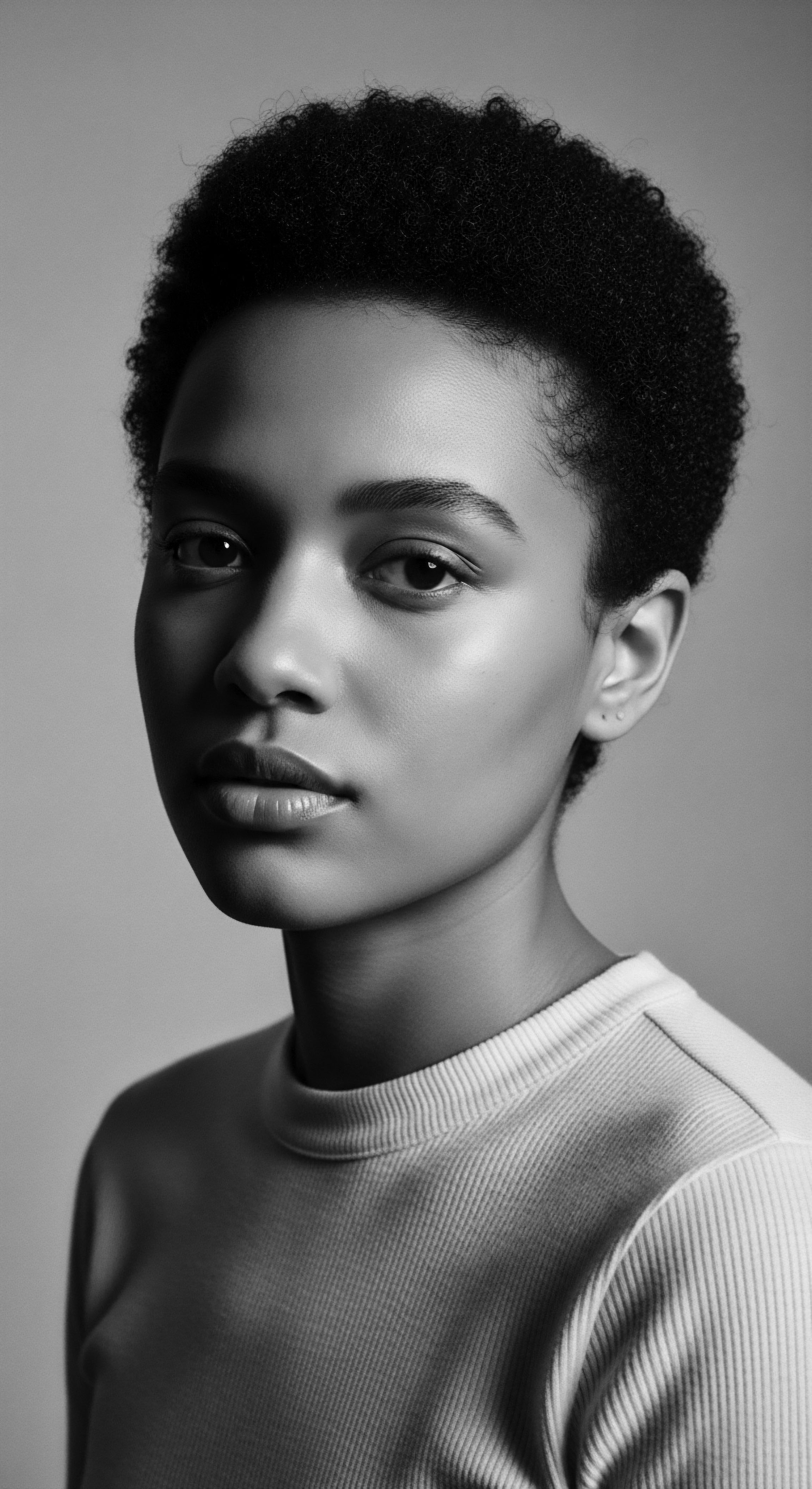
A Shared Vocabulary for Hair
The lexicon surrounding textured hair possesses a rich heritage, drawing from African languages, Creole dialects, and the lived experiences of the diaspora. Terms like Nappy, once weaponized as a derogatory slur, have been reclaimed and imbued with pride by many within the Black community. Digital spaces have served as the fertile ground for this linguistic re-appropriation. We see discussions where users share their personal histories with words, transforming shame into affirmation.
Think of the specificity in terms like Coily, Kinky, and Afro. These words, while seemingly simple descriptors, carry generations of history, resistance, and self-acceptance. Platforms like YouTube and Instagram become living dictionaries, where content creators demonstrate the visual manifestation of these terms, allowing for a shared understanding that transcends geographical boundaries. This digital exchange helps to standardize a respectful vocabulary, replacing outdated or insensitive terminology with language that honors the hair’s true nature and its cultural story.
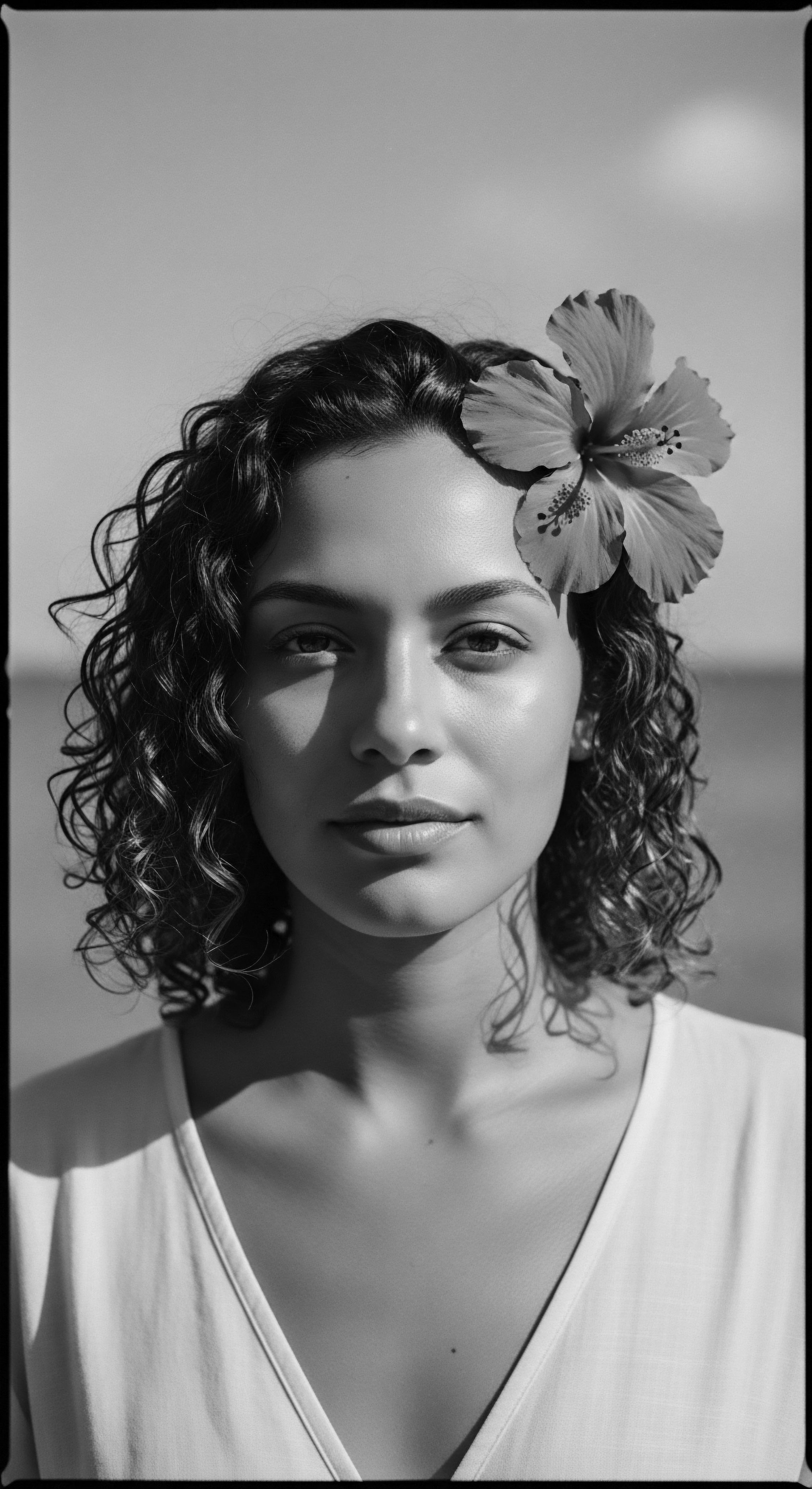
Cycles of Growth and Environmental Influences
Hair growth follows biological cycles, yet these cycles have always intersected with environmental factors and ancestral practices. Historically, diet, climate, and access to natural resources shaped hair health. Traditional African societies utilized a host of botanicals and natural oils, like shea butter and various plant infusions, recognizing their nourishing properties.
These practices were not random; they were responses to the specific needs of textured hair in its given environment. The understanding was passed down, mother to daughter, elder to youth, a chain of living knowledge.
Digital platforms have amplified this ancestral wisdom. Modern science confirms the benefits of many traditional ingredients, such as the moisturizing properties of certain oils or the protein content of specific plants, which aid in strengthening hair and preventing breakage. Digital communities often host “ingredient deep dives,” analyzing the scientific composition of plants historically used for hair care, thus bridging ancient wisdom with contemporary understanding. This online sharing validates ancestral methods, encouraging a return to more natural, heritage-aligned care routines, often highlighting ingredients from specific African regions.

Ritual
The very act of styling textured hair has always been far more than an aesthetic choice; it is a ritual, a connection to lineage, and a declaration of selfhood. From intricate ancestral braids to the proud display of an afro, each style carries the weight of history and community. Digital platforms, in their vibrant, interconnected ways, have reshaped these modern practices, serving as both museums of heritage and dynamic studios for new expressions, all while upholding the profound cultural significance of hair care.
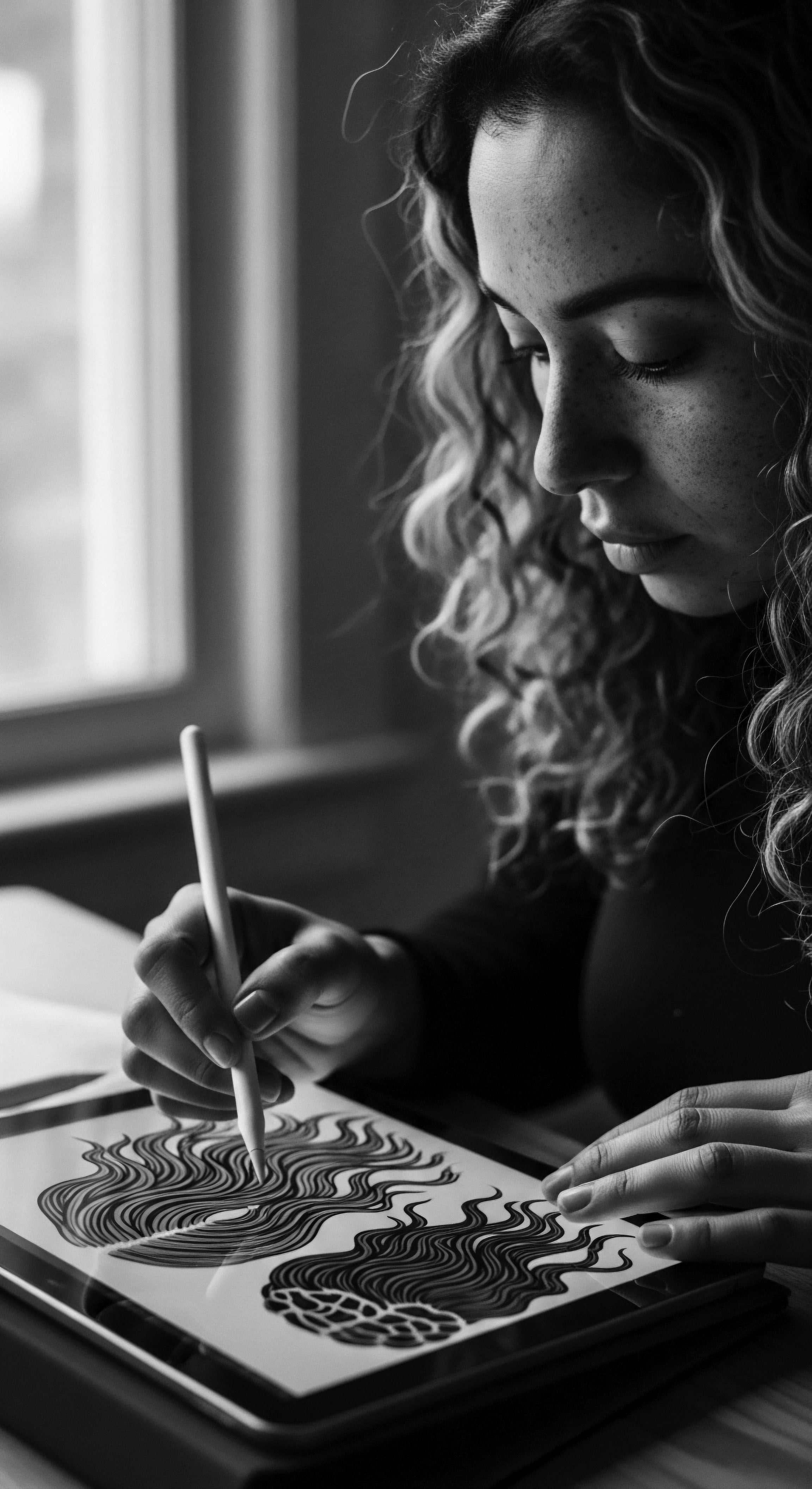
Protective Styling Reclaimed
Protective styles, such as Braids, Locs, and Twists, have deep ancestral roots, serving practical purposes like reducing manipulation and shielding hair from environmental aggressors, while also acting as powerful cultural markers. The history of braids, for example, stretches back to 3500 BC in Africa, where patterns communicated tribal affiliation, social standing, marital status, wealth, and even religious beliefs. During the devastating era of transatlantic slavery, these traditions persisted, often as acts of resistance; enslaved Africans sometimes wove escape route maps into cornrows or hid seeds within their hair for survival.
Digital platforms have become vibrant archives and instructional spaces for these styles. YouTube tutorials break down the technical skill required for diverse braided patterns, from Box Braids to Fulani Braids, preserving techniques that might otherwise have faded or remained confined to specific communities. Instagram showcases the boundless creativity applied to these protective forms, illustrating how contemporary artists adapt traditional methods for new contexts.
This digital revival is a powerful affirmation of cultural identity, allowing individuals globally to access, learn, and practice styles that honor their heritage. It is a reversal of historical suppression, where once, laws even prohibited Black women from wearing certain hairstyles in public.

Natural Styling and Ancestral Definition
The modern natural hair movement, significantly influenced by digital platforms, echoes the spirit of reclamation seen during the Black Power Movement of the 1960s and 70s, when the Afro became a potent symbol of pride and resistance against Eurocentric beauty standards. Today, online communities provide resources for defining natural texture without heat or chemicals, often returning to practices that align with ancestral methods. The emphasis is on enhancing the hair’s inherent beauty, rather than altering its structure.
Digital spaces have democratized natural hair knowledge, allowing individuals to connect with ancestral care methods from anywhere.
Consider the myriad ways individuals now achieve curl definition ❉ techniques like finger coiling, wash-and-gos, or braiding for stretched results. Many of these methods, while given modern names, find their philosophical parallels in traditional ways of handling hair—gentle sectioning, moisture sealing, and patient manipulation. Digital creators meticulously document their routines, sharing insights on how different products or approaches influence varying curl patterns.
This collective sharing creates a living library of accessible knowledge, much like the communal grooming sessions of old, where wisdom was exchanged and passed on. The ability to see diverse textures styled naturally, and to learn from those experiences, empowers individuals to embrace their hair as it grows from their scalp, celebrating its inherent beauty.

Wigs and Extensions Through a Cultural Lens
The use of wigs and hair extensions holds a significant, often misunderstood, place in Black hair heritage. Far from a purely modern invention, hair lengthening and adornment with materials such as vegetable fiber, sinew, or even hair from relatives, has been practiced in various African societies for centuries, pre-dating European contact. These were not meant to mimic other hair types but served as expressions of status, ritual, and artistic creativity.
Digital platforms have transformed the accessibility and perception of wigs and extensions. Online marketplaces offer a vast array of textures and styles, allowing individuals to experiment with different looks while protecting their natural hair. Tutorials on installation and maintenance abound, making these traditionally complex techniques approachable.
The dialogue online also works to de-stigmatize their use, reclaiming them as versatile tools for self-expression and protective styling, echoing their ancient purposes. This digital landscape provides a space where the historical function of hair augmentation as a form of cultural adornment can be widely recognized and celebrated.

Heat and Heritage ❉ A Careful Balance
Heat styling and thermal reconditioning introduce a complex dynamic within textured hair practices. Historically, the pursuit of straightened hair often involved harsh chemicals or direct heat, sometimes with damaging consequences. This was frequently tied to societal pressures to conform to Eurocentric beauty standards, a legacy of colonialism and slavery. The advent of the hot comb in the late 19th century, while offering a means to straighten hair, also carried risks if not used properly.
Digital platforms play a dual role here. On one hand, they still host content promoting methods that can compromise hair health. On the other, a powerful counter-movement emphasizes heat safety and minimal heat usage. Influencers share techniques for achieving straight styles with less damage, or they champion methods that celebrate the natural texture, advocating for heat-free options.
The collective online knowledge warns against practices that historically harmed hair, promoting a more informed and gentle approach rooted in long-term health, a principle that aligns with ancestral wisdom focusing on hair preservation. Online discourse frequently contrasts the ephemeral nature of chemically or heat-straightened hair with the resilient authenticity of natural styles, often grounded in a reclaiming of heritage.
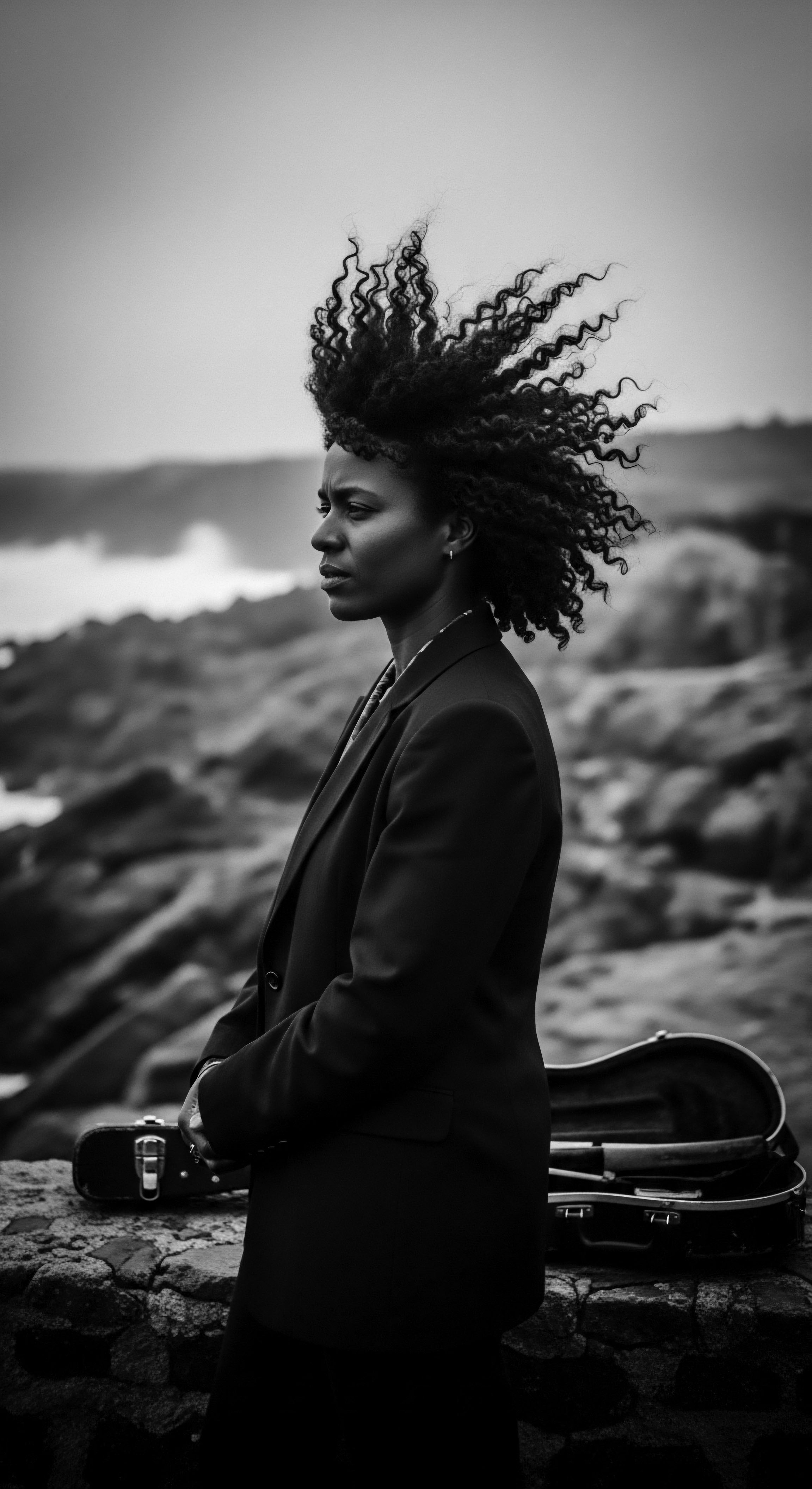
The Enduring Toolkit of Textured Hair
From the earliest combs crafted from wood and bone found in ancient Kush and Kemet (modern Sudan and Egypt) dating back 7,000 years, to the specialized tools of today, the implements used for textured hair care have a long lineage. These historical tools were not simply functional; they were often symbols of status, decorated with culturally significant motifs, and held ceremonial importance.
Digital platforms have become a marketplace and a forum for discussion about these tools. Here, one finds debates about the best detangling brushes for coily hair, reviews of steam treatments, and demonstrations of traditional combs. The modern Afro Pick, for instance, a tool that gained prominence during the 1960s Black Power Movement as a symbol of cultural pride and resistance, finds new life and meaning in digital imagery and discussions. The digital space ensures that knowledge of appropriate tools, both traditional and contemporary, remains accessible, helping individuals properly care for their unique hair, thus preventing damage and promoting growth, much like their ancestors did with their own specialized implements.
- Afro Pick ❉ A wide-toothed comb, archeologically tracing back 7,000 years to ancient Kemet and Kush, used today as both a styling tool and a symbol of Black pride and identity.
- Hair Threading ❉ An ancient African technique where hair is wrapped tightly with thread to stretch and straighten it without heat, now often seen in digital tutorials for heat-free stretching.
- Wooden Comb ❉ Traditional combs, often hand-carved, used for gentle detangling and styling, prized today for minimizing breakage on textured hair.
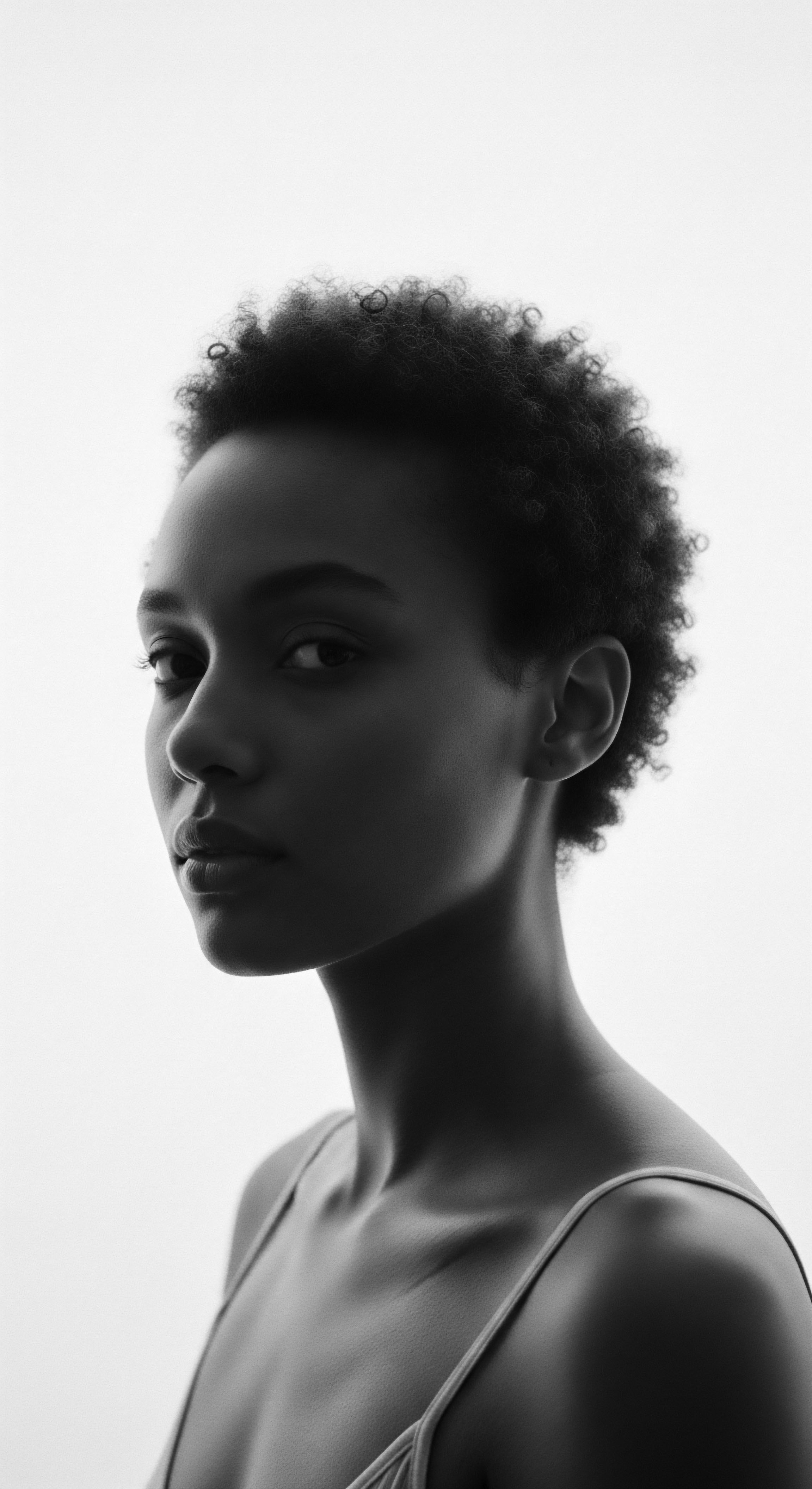
Relay
The currents of connection facilitated by digital platforms have spun a new kind of relay, carrying the legacy of textured hair practices across continents and generations. This is not a simple transmission but a dynamic interaction, where ancient wisdom meets contemporary inquiry, creating a living archive of care, identity, and shared experience. Digital spaces have become central to how collective identity around textured hair is formed and how ancestral knowledge finds new footing in modern daily life.
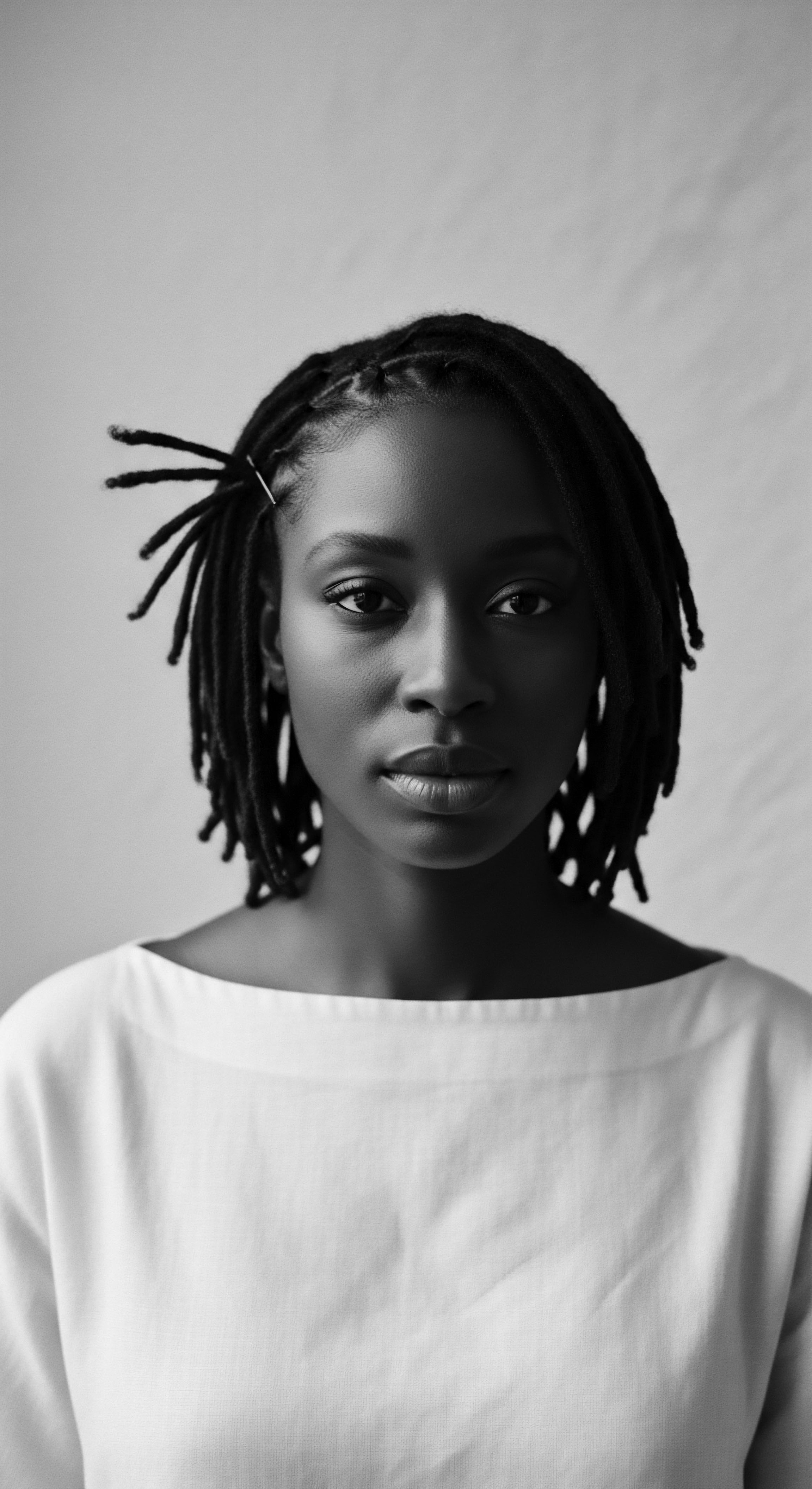
The Architecture of Regimens
Developing a hair care regimen for textured hair has historically been a deeply personal, often communal, undertaking, rooted in observation and the passing of inherited wisdom. Ancestral communities understood that health and well-being, including hair health, were interwoven with nature and tradition. The concept of a holistic approach, where internal wellness reflects external vitality, has always been central to African wellness philosophies. Digital platforms now provide frameworks for building personalized regimens that honor these ancient principles, while integrating modern scientific understanding.
Consider the way online communities discuss practices such as Pre-Pooing, a method of oiling hair before washing, which mirrors ancient techniques of conditioning hair with natural oils before cleansing. Or the emphasis on regular moisture application, echoing centuries-old methods of “greasing” the scalp and strands with natural products. Digital forums and video platforms feature detailed discussions of product ingredient lists, allowing users to make informed choices that align with their hair’s specific needs, drawing on both traditional botanical knowledge and contemporary cosmetic science. This exchange allows for a sophisticated blending of ancient ritual and informed consumerism, enabling individuals to craft care routines that are uniquely theirs yet deeply connected to a collective heritage.

The Nighttime Sanctuary of Hair
The practice of protecting textured hair during sleep with specialized head coverings carries a compelling historical weight. The Bonnet, a seemingly simple garment, has a complex history tied inextricably to the struggles and resilience of Black women. While European women wore bonnets for warmth or fashion in the 1800s, for Black women, particularly during enslavement, headwraps and bonnets became instruments of both control and quiet defiance.
Laws were even enacted in some regions, mandating that Black women cover their hair in public spaces, a visual marker of subjugation. Yet, Black women repurposed these coverings, using them to preserve their hair and to subtly communicate coded messages.
In the present day, the bonnet remains a cornerstone of textured hair care, a protective shield against friction and moisture loss, preserving styles and promoting health. Digital spaces have elevated the bonnet from a functional item to a symbol of self-care and cultural pride. Social media conversations celebrate the “bonnet wisdom,” showcasing diverse styles and materials, and educating new generations on its vital role. This online dialogue transforms a historical necessity into a celebrated ritual, reclaiming its power as a tool for hair preservation and a connection to enduring ancestral practices.

Ingredients Connecting Generations
The efficacy of certain ingredients for textured hair often rests on centuries of traditional use. Ancestral communities across Africa and the diaspora passed down knowledge of herbs, oils, and plant extracts, recognizing their therapeutic properties for hair and scalp. Ingredients like Coconut Oil, Shea Butter, and Almond Oil, now widely available, were staples in traditional African hair care, prized for their deep moisturizing and strengthening attributes.
Digital platforms have become encyclopedias of natural ingredients, with countless videos and articles dissecting their benefits and optimal usage. Content creators meticulously research and share information on botanicals, linking their modern applications back to historical uses. This digital resurgence has led to a greater appreciation for traditional formulations and a movement towards cleaner, natural products, often influenced by the wisdom of healers and knowledge keepers from the African diaspora. The collective intelligence of online communities supports individuals in discerning effective ingredients, offering a contemporary means to apply inherited knowledge in their care routines.
- Shea Butter ❉ A traditional African fat, extracted from the nuts of the shea tree, historically used for its profound moisturizing and healing properties for skin and hair.
- Coconut Oil ❉ Widely used across African and diasporic cultures, recognized for its ability to penetrate the hair shaft and provide deep conditioning.
- Aloe Vera ❉ An ancient plant, utilized for its soothing and moisturizing properties, appearing in traditional remedies and modern formulations for scalp health.
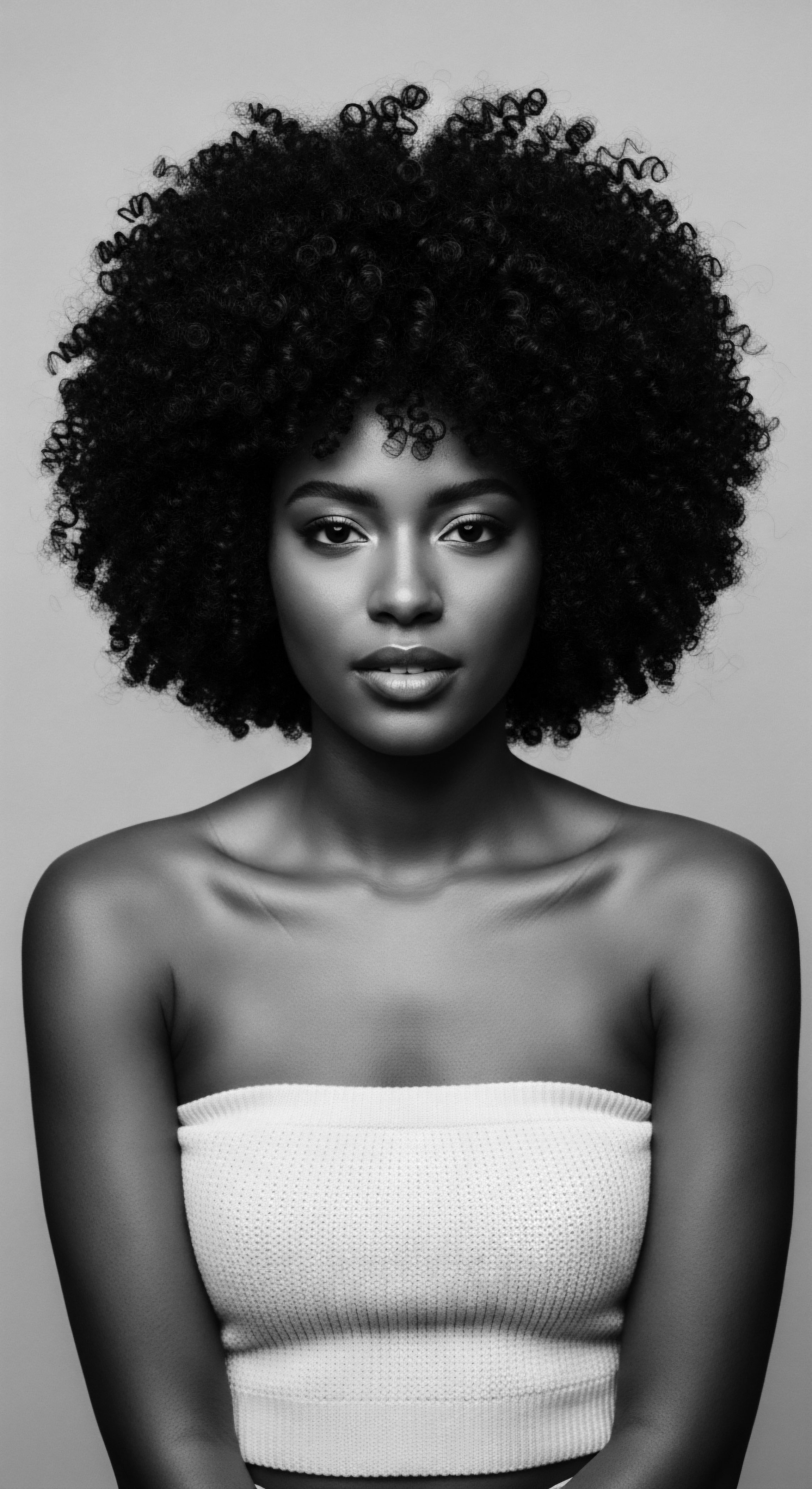
Problem Solving with a Dual Lens
Addressing common textured hair concerns—such as breakage, dryness, or scalp irritation—traditionally involved consulting community elders or relying on time-tested family remedies. These solutions were often holistic, recognizing the interconnectedness of hair health with overall well-being. Digital platforms now supplement these traditional networks, providing a vast resource for problem-solving, blending ancestral wisdom with modern dermatological insights.
How do digital communities share traditional remedies for hair issues?
Online forums and social media groups serve as communal spaces where individuals share experiences and remedies for challenges like frizz or lack of definition. For instance, discussions around Traction Alopecia, a form of hair loss often caused by tight styling, frequently incorporate warnings against practices that historically damaged hair, while also offering gentle, heritage-aligned solutions. Academic papers published on digital repositories discuss how African American women use platforms like YouTube to find information and support, facilitating a positive discourse around natural hair and empowering them to address hair challenges. This blend of personal testimony, traditional solutions, and accessible scientific explanation allows individuals to approach hair problems with a comprehensive, culturally informed perspective.
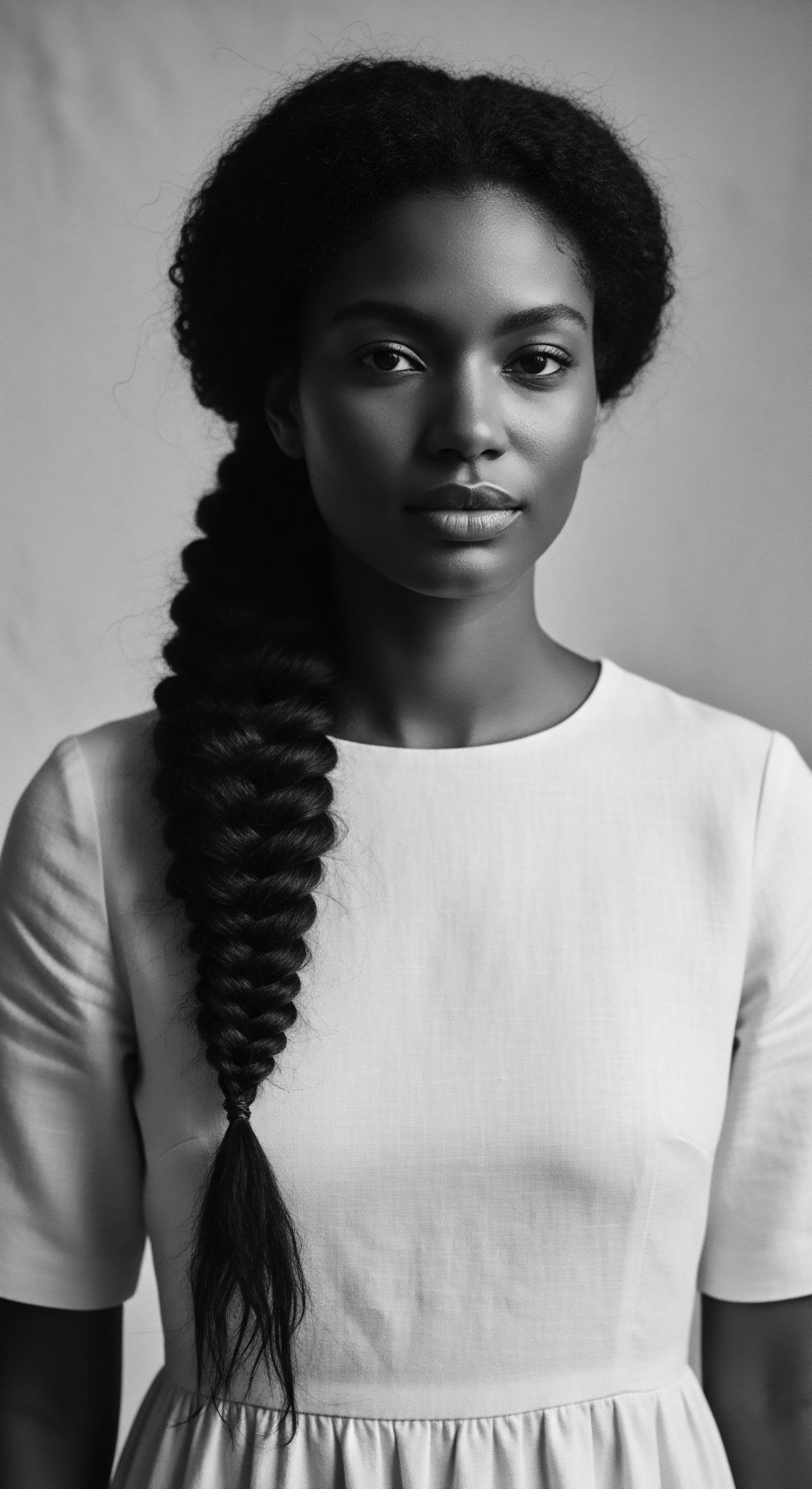
The Holistic Tapestry of Hair Health
African ancestral wellness philosophies consistently view hair as more than just physical strands; it is intrinsically linked to spirituality, identity, and overall bodily harmony. In many ancient African societies, a woman’s head and hair were revered as direct connections to the spiritual world, with hairstylists sometimes holding significant spiritual power and performing rituals for emotional well-being. The concept of PsychoHairapy, a modern community health model, explicitly grounds itself in traditional African spiritual systems, using hair care as a culturally relevant entry point for discussions on mental and spiritual health.
Digital platforms have become contemporary spaces for continuing this holistic perspective. Online discussions connect hair health to stress levels, nutrition, and mental peace, extending beyond mere product recommendations. There are communities dedicated to plant-based diets for hair growth, mindfulness practices for scalp health, and affirmations for self-acceptance related to hair identity. This digital echo of ancestral practices ensures that the understanding of textured hair care remains rooted in a comprehensive view of well-being, reminding us that healthy hair is a reflection of a balanced self, much as it was understood in the wisdom of ancient times.
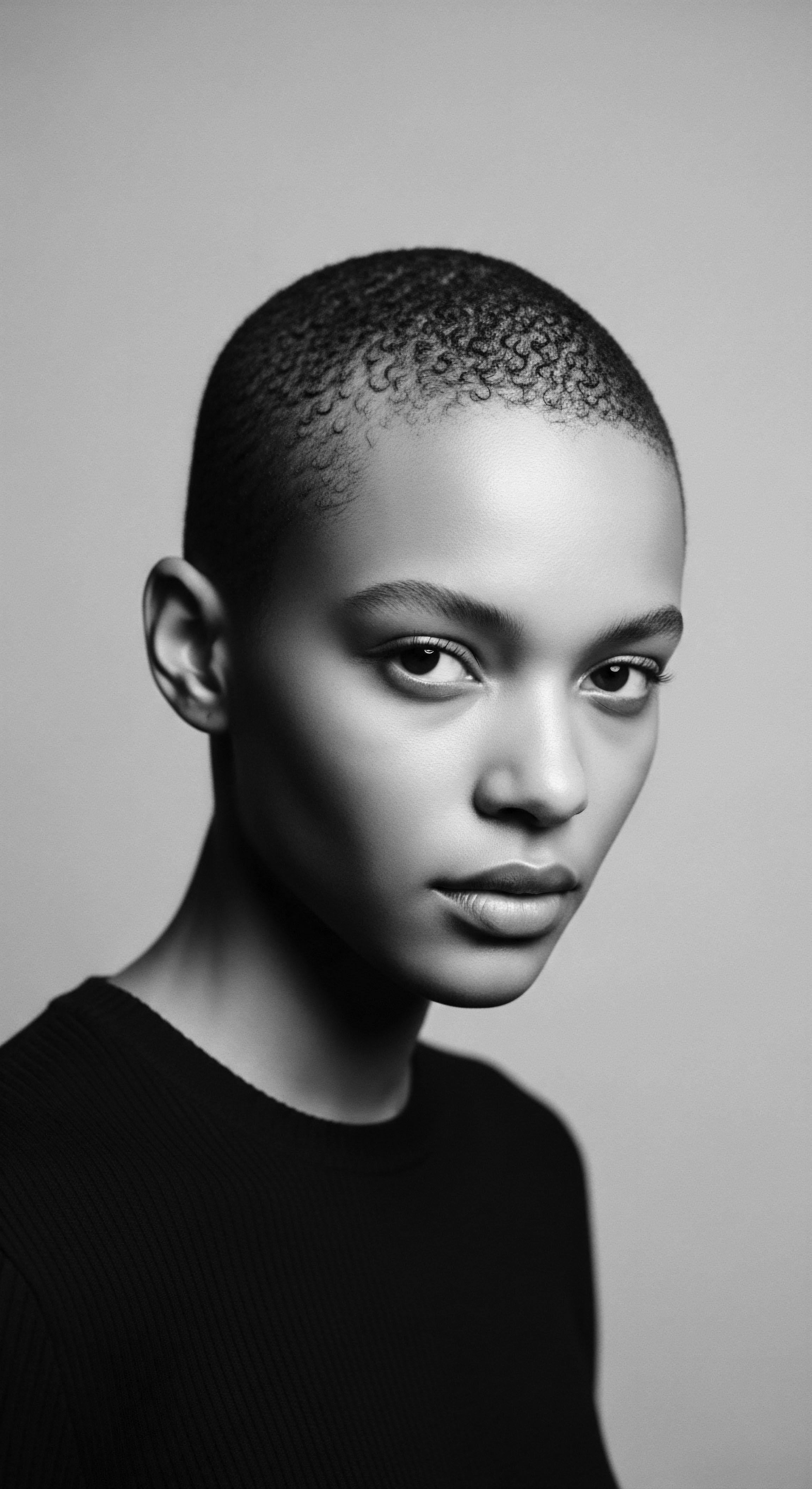
Reflection
The journey of textured hair through time is a story of resilience, adaptation, and profound identity. Digital platforms, in their vibrant immediacy, have not merely mirrored this journey; they have actively reshaped it, offering new avenues for remembrance, reclamation, and connection. They stand as a testament to the enduring ‘Soul of a Strand’, a living library where the whispers of ancestral wisdom meet the boundless reach of the present moment.
This digital evolution is a powerful force, allowing individuals from the African diaspora to access a wealth of historical knowledge and contemporary insights. It enables a collective embrace of heritage, reminding each person that their hair is not just a biological attribute but a sacred link to a past that defied erasure. The online realms have become spaces for healing, for learning, and for celebrating the unique beauty that has always belonged to textured hair, securing its legacy for generations to come.

References
- Allen, Maya. “Braids, Plaits, Locs ❉ The History of Black Protective Hairstyles.” Royaltee Magazine, 17 Feb. 2021.
- Annie International, Inc. “The Origin Story Of The Bonnet.” Annie International, Inc., 21 Dec. 2023.
- Byrd, Ayana D. and Lori L. Tharps. Hair Story ❉ Untangling the Roots of Black Hair in America. St. Martin’s Press, 2014.
- Byrdie. “The Significance and History of Bonnets.” Byrdie, 27 Sept. 2022.
- Chambers, S. A. “Restyling Blackness ❉ Exploring the Interstices of the Natural Hair Practices of Young Black Women in the UK.” University of Central Lancashire, 2018.
- colleen. “The History of Textured Hair.” colleen, 28 Aug. 2020.
- Hype Hair. “Unveiling the History of the Hair Bonnet for Black Women.” Hype Hair, 26 June 2023.
- Johnson, T. and Bankhead, T. “Hair It Is ❉ Examining the Experiences of Black Women with Natural Hair.” International Journal of Interdisciplinary Cultural Studies, vol. 12, no. 1, 2017.
- Love, Nya. African Holistic Health for Women ❉ Ancient Tribal Remedies, African American Herbalism, Black Medicine and Other Ancestral Cures to Revive your Divine Feminine Energy by Healing the Body and Soul. Draft2Digital, 2023.
- Matjila, Chéri R. “The meaning of hair for Southern African Black women.” University of the Free State, 2020.
- Noireônaturel. “African braids ❉ a timeless heritage of beauty and cultural significance.” Noireônaturel.
- Oladele, Deborah B. et al. “The Genomic Variation in Textured Hair ❉ Implications in Developing a Holistic Hair Care Routine.” MDPI, 2023.
- Patterson, E. N. “The Impact of Hair on African American Women’s Collective Identity Formation.” Iowa State University, 2015.
- ResearchGate. “Hair in African Art and Culture.” ResearchGate.
- ResearchGate. “#TeamNatural ❉ Black Hair and the Politics of Community in Digital Media.” ResearchGate.
- Starks, C. “YouTube Communities and the Promotion of Natural Hair Acceptance Among Black Women.” University of South Carolina, 2017.
- The Afrotherapy Salon. “Afro Hair Terminology.” Afrotherapy Salon.
- UA Campus Repository. “Detangling the Strands of Identity ❉ Exploring Hair Politics Among African American Women in the United States.” University of Alabama, 2024.
- Yes Gurl. “Black natural hair movement ❉ How it thrived on social media.” Yes Gurl.
